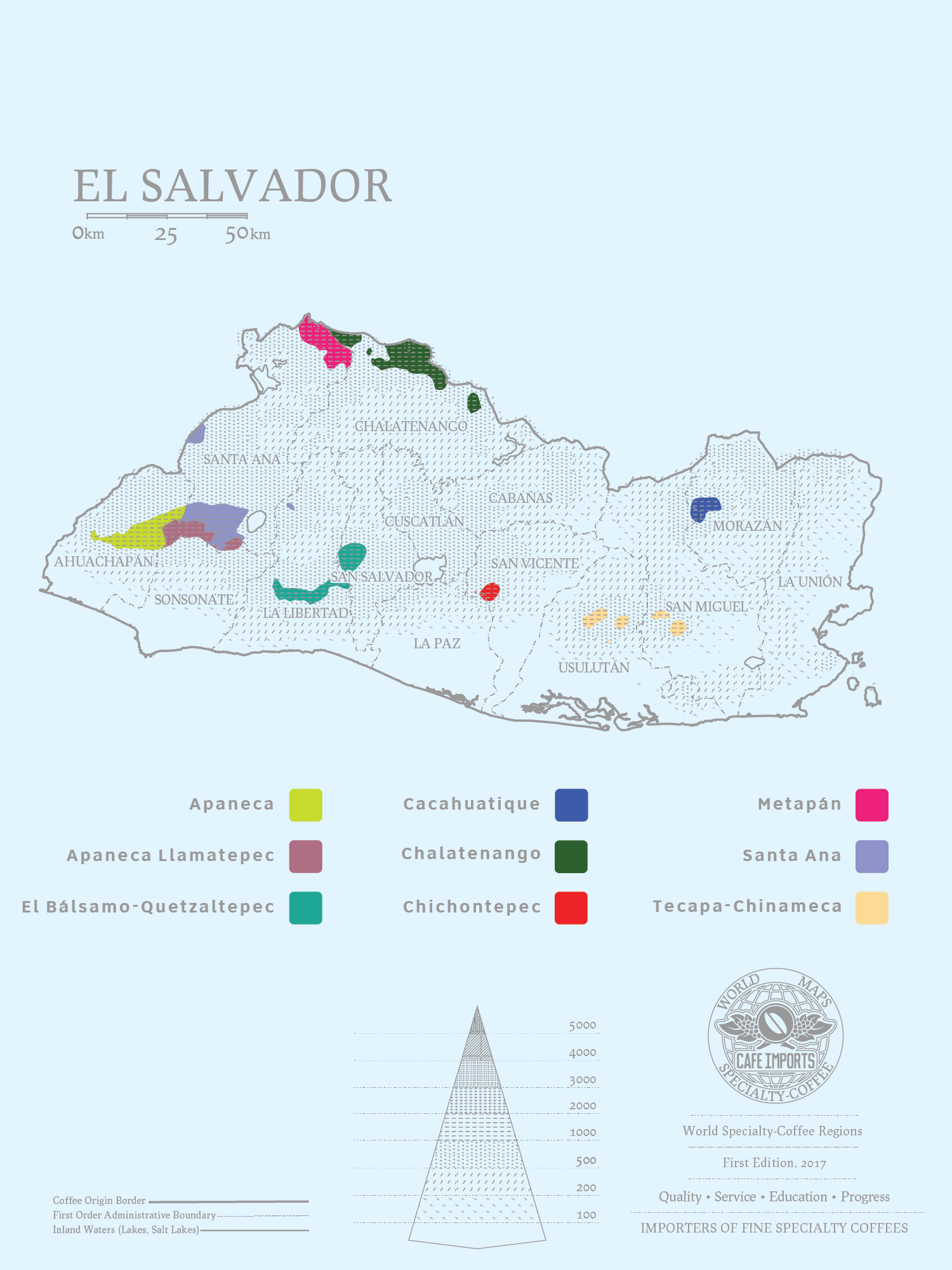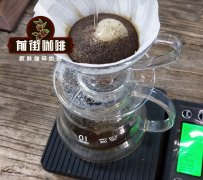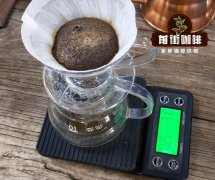El Salvador coffee history introduction El Salvador coffee six major producing areas and coffee classification system

Introduction to El Salvador
El Salvador, known as the "hometown of volcanoes", is the smallest country in Central America (roughly the same size as New Jersey). In the mid-19th century, coffee was grown after independence from Nicaragua and soon became a popular cash crop. Active volcanic activity brings mineral-rich volcanic ash to the country. The soil, which is mainly composed of volcanic ash, has more minerals and less organic matter. Therefore, in order to maintain the geographical position and make up for the shortage of organic matter, Samaritan farmers will use the pulp residue of the treated coffee beans or the organic matter under the coffee trees as fertilizers to make up for the lack of organic matter in the soil, so that the planting of coffee trees can produce coffee beans with harmonious taste. The country's most meaningful initiative is to introduce organic agriculture to the world, cultivating more than 150000 tons of organic coffee every year.
Six major coffee producing areas in El Salvador
The six major coffee producing areas of El Salvador: Apaneca Apaneca, Alotepec-Metapan, Central Belt in central Scotland, Chichontepec in Chinjontepec, Tecapa & Cacahuatique Mountain Rang in Tecapa), are generally divided into alpine slopes or plateau areas covered with volcanic ash at an altitude of 1200 meters above sea level, with coffee harvest and harvest season from November to April of the following year. As coffee prefers a mild climate, coffee trees are mainly planted in the shade of tall trees (shade grown coffee) in order to avoid excessive temperature and direct sun exposure, affecting the quality of coffee beans. The coffee beans produced by it belong to Arabica species, mainly from Pacas and Bourbon brands, and belong to big beans with sweet taste and excellent flavor.
Salvadoran coffee grading system
Coffee is graded according to the altitude of its growth, which has nothing to do with its quality:
■ Strictly High Grown (SHG): over 1200 m above sea level
■ High Grown (HG): over 900m above sea level
■ Central Standard over 600m above sea level

Important Notice :
前街咖啡 FrontStreet Coffee has moved to new addredd:
FrontStreet Coffee Address: 315,Donghua East Road,GuangZhou
Tel:020 38364473
- Prev

What are the characteristics and differences between Panama's Kendra volcano and Renasimien coffee producing areas?
The VOLCAN-CANDELA volcano, which borders Costa Rica, takes its name from the Volcan Baru volcano and the city of Piedra Candela, which produces most of Panama's food and some amazing coffee. The region is named after the cities of Baru and Piedra Candela, which borders Costa Rica.
- Next

The difference between Apaneca-Ilamatepec and Alotepec-Metapan coffee producing areas in El Salvador
Apaneca-Ilamatepec Mountains Apaneca-Ilamatepec Mountains, located west of El Salvador, 500-2300 meters above sea level. Volcanic activity is frequent here, but it still produces a lot of coffee that has won prizes in competitions. The most recent eruption of Mount Santa Ana in 2005 has had a huge impact on its coffee production over the years. This is the largest producing area in El Salvador, and probably the most.
Related
- Beginners will see the "Coffee pull flower" guide!
- What is the difference between ice blog purified milk and ordinary milk coffee?
- Why is the Philippines the largest producer of crops in Liberia?
- For coffee extraction, should the fine powder be retained?
- How does extracted espresso fill pressed powder? How much strength does it take to press the powder?
- How to make jasmine cold extract coffee? Is the jasmine + latte good?
- Will this little toy really make the coffee taste better? How does Lily Drip affect coffee extraction?
- Will the action of slapping the filter cup also affect coffee extraction?
- What's the difference between powder-to-water ratio and powder-to-liquid ratio?
- What is the Ethiopian local species? What does it have to do with Heirloom native species?

